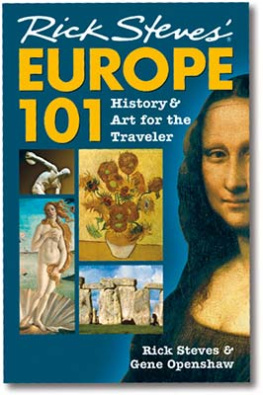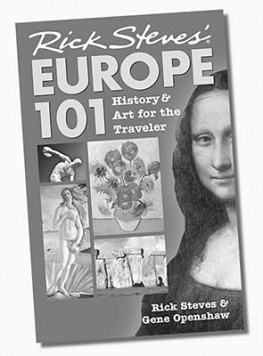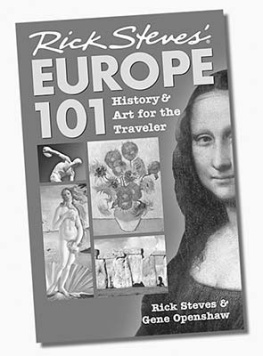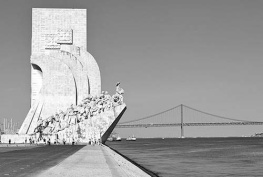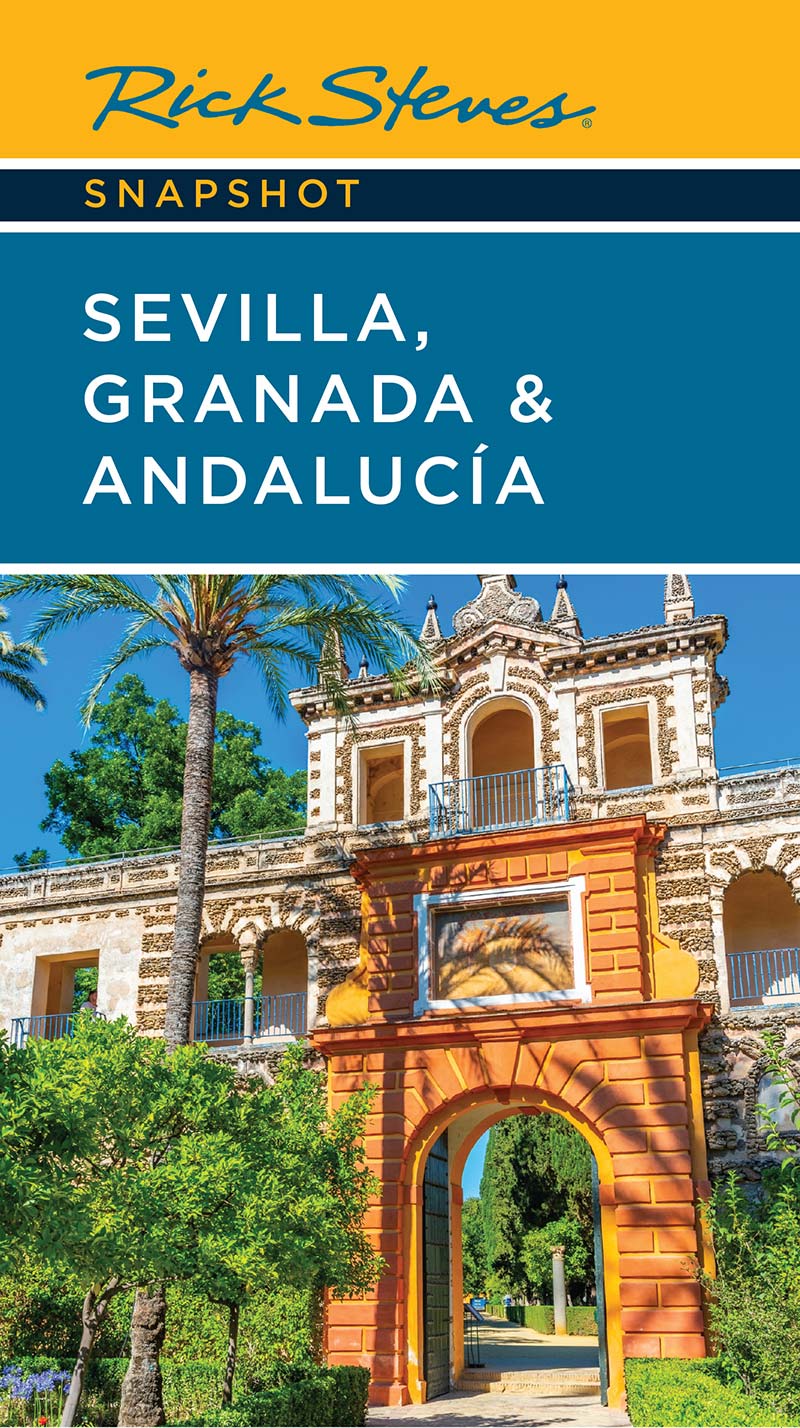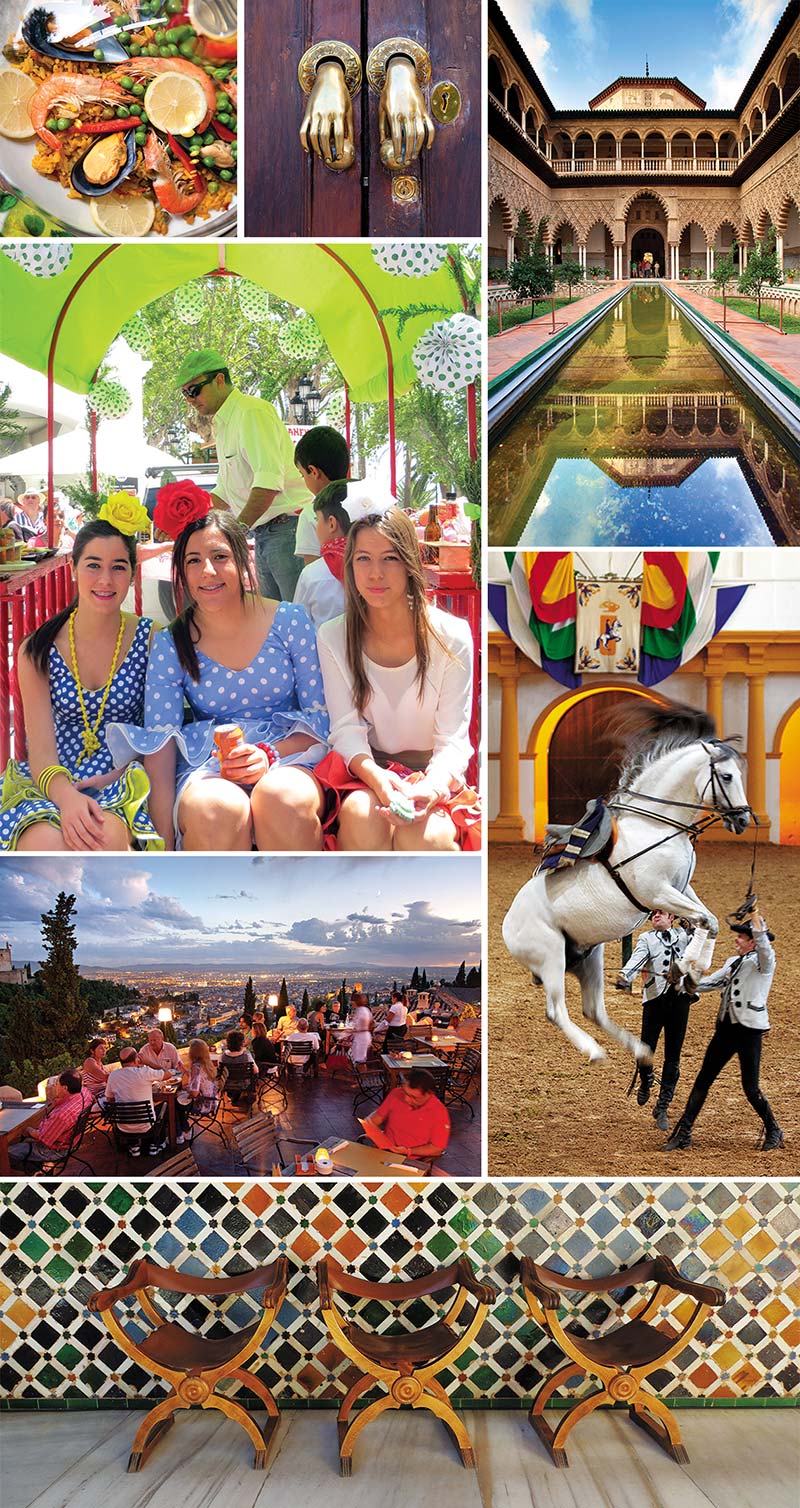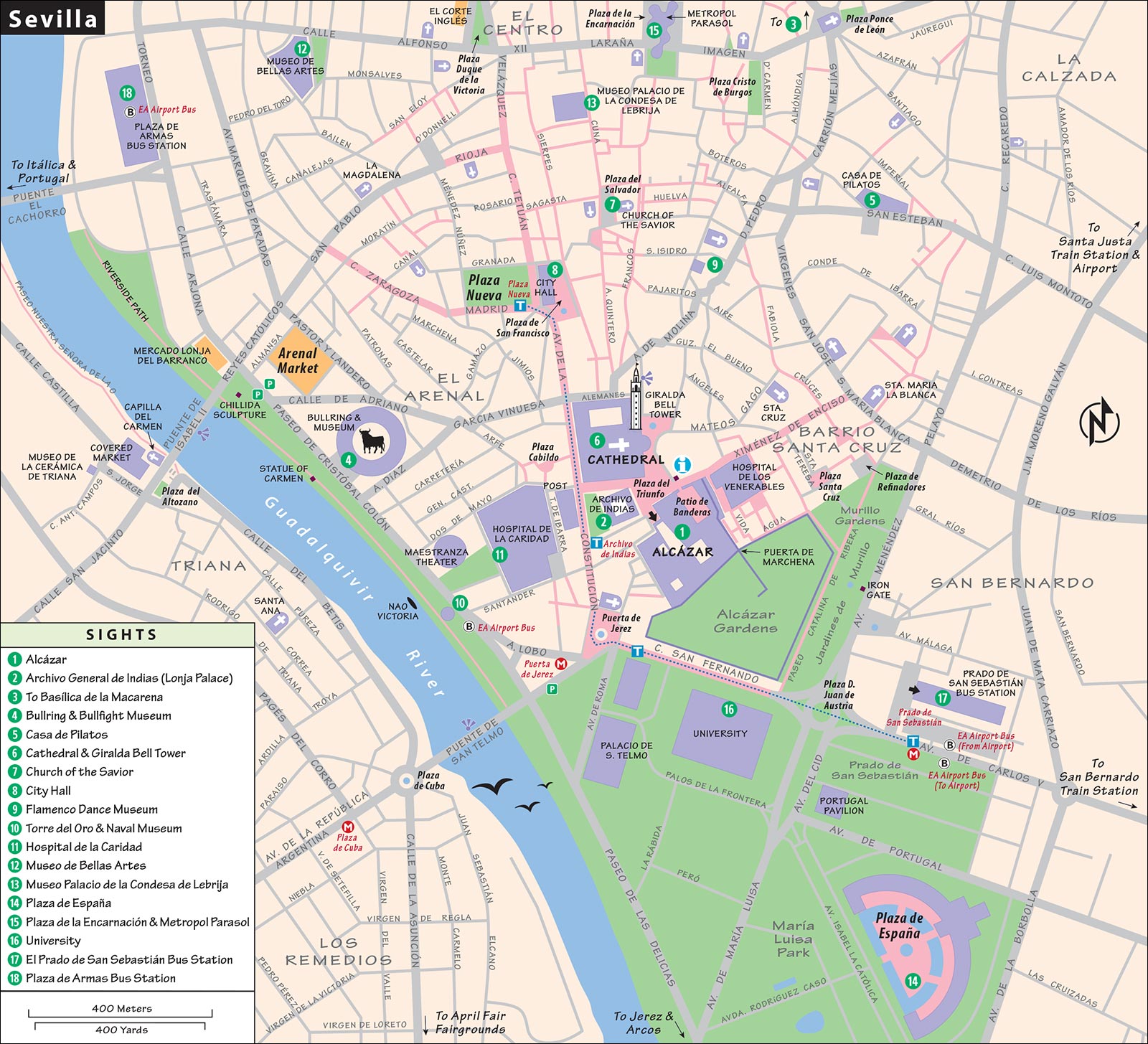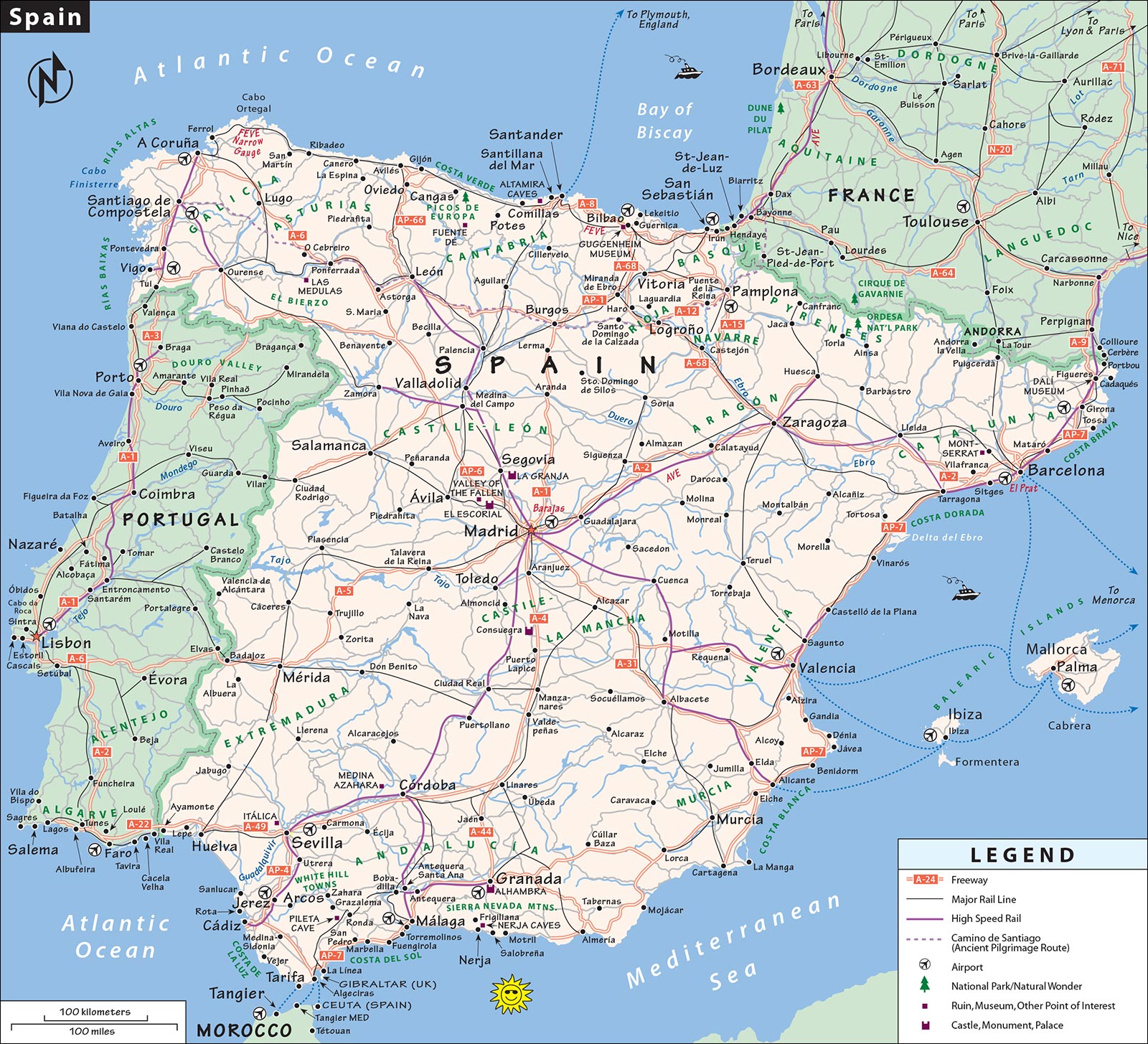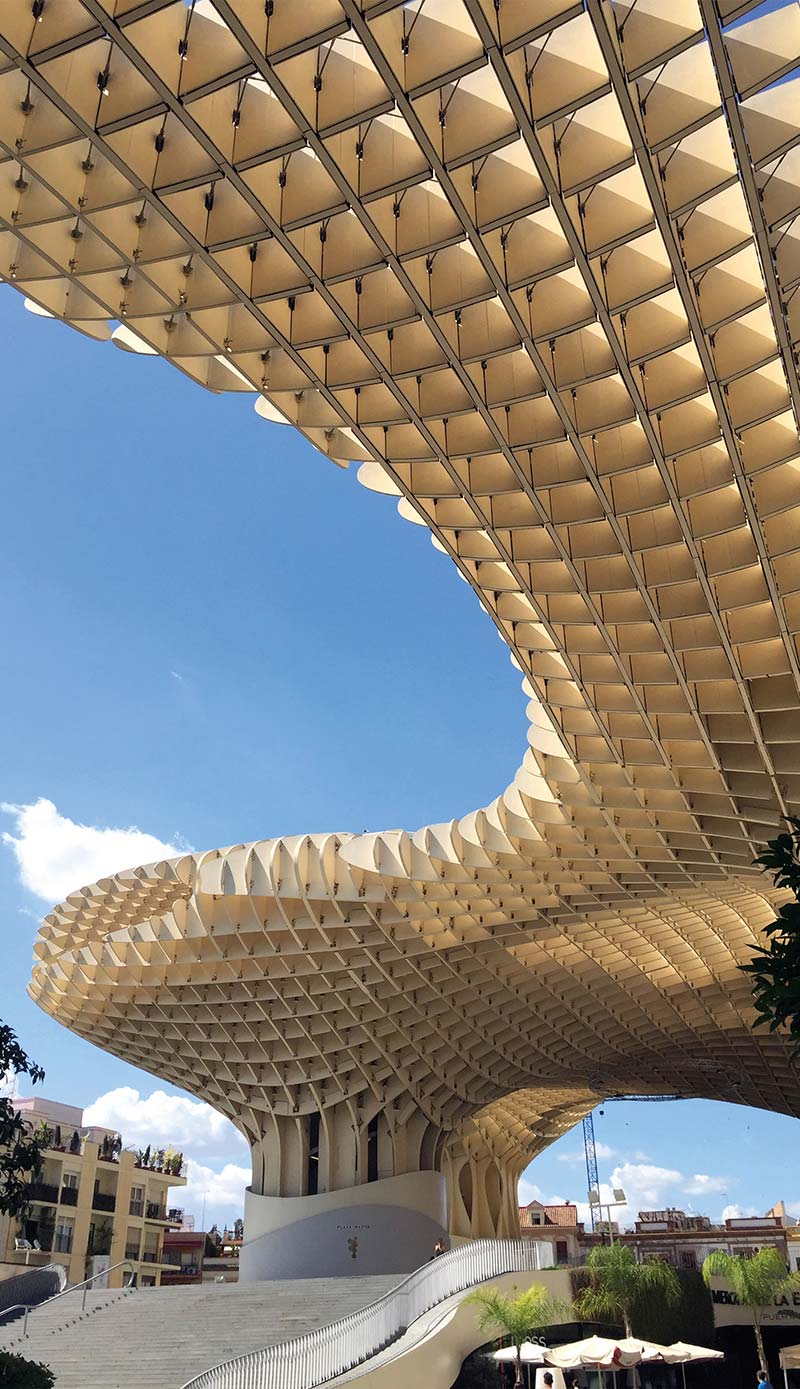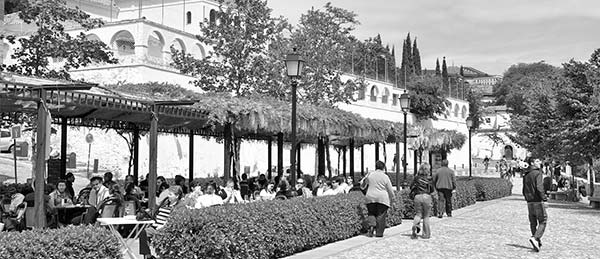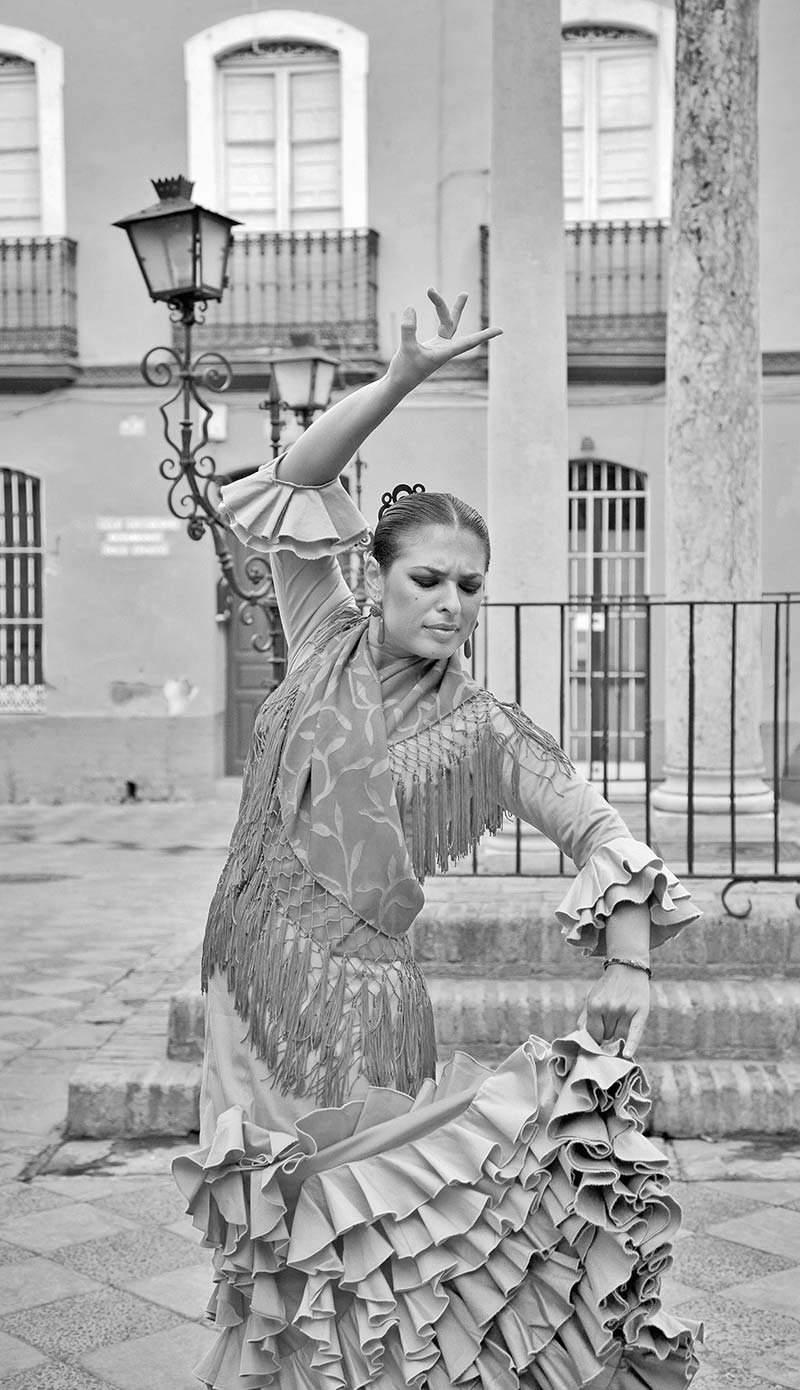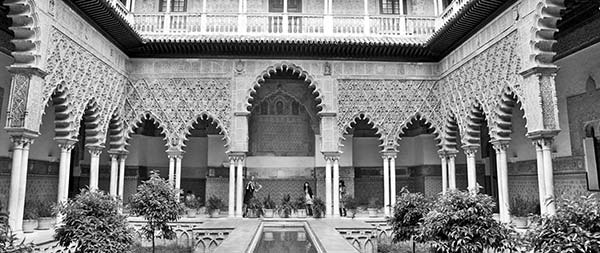Contents
Contents
Rick Steves
SNAPSHOT
Sevilla, Granada & Andaluca
This Snapshot guide, excerpted from my guidebook Rick Steves Spain, introduces you to southern Spains two top citiesSevilla and Granadaand the surrounding Spanish heartland. When Americans think of Spain, they often picture this region, with its massive cathedrals, Moorish palaces, vibrant folk life, whitewashed villages, bright sunshine, and captivating rat-a-tat-tat of flamenco.
Sevilla is the soulful cultural heart of southern Spain, with an atmospheric old quarter and riveting flamenco shows. Granada, formerly the Moorish capital, is home to the magnificent Alhambra palace. Crdoba features Spains top surviving Moorish mosque, the Mezquita. Make time to delve into Andalucas sleepy, whitewashed hill towns: Arcos de la Frontera, Ronda, and Grazalema. Spains south coast, the Costa del Sol, is a palm-tree jungle of beach resorts and concrete, but has some appealing destinationsNerja, Tarifa, and Gibraltarbeyond the traffic jams. And since its so easy, consider an eye-opening side-trip to another continent by hopping the ferry to Tangier, the revitalized gateway to Morocco (and to Africa).
To help you have the best trip possible, Ive included the following topics in this book:
Planning Your Time, with advice on how to make the most of your limited time
Orientation, including tourist information offices (abbreviated as TI), tips on public transportation, local tour options, and helpful hints
Sights with ratings and strategies for meaningful and efficient visits
Sleeping and Eating, with good-value recommendations in every price range
Connections, with tips on trains, buses, and driving
Practicalities, near the end of this book, has information on money, staying connected, hotel reservations, transportation, and other helpful hints, plus Spanish survival phrases.
To travel smartly, read this little book in its entirety before you go. Its my hope that this guide will make your trip more meaningful and rewarding. Traveling like a temporary local, youll get the absolute most out of every mile, minute, and dollar.
Buen viaje! Happy travels!
Flamboyant Sevilla (seh-VEE-yah) thrums with flamenco music, sizzles in the summer heat, and pulses with passion. Its a place where bullfighting is still politically correct and little girls still dream of being flamenco dancers. While Granada has the great Alhambra and Crdoba has the remarkable Mezquita, Sevilla has soul. As the capital of Andaluca, Sevilla offers a sampler of every Spanish icon, from sherry to matadors to Moorish heritage to flower-draped whitewashed lanes. Its a wonderful-to-be-alive-in kind of place.
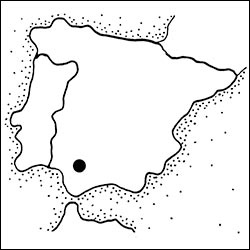
As the gateway to the New World in the 1500s, Sevilla boomed when Spain did. The explorers Amerigo Vespucci and Ferdinand Magellan sailed from its great river harbor, discovering new trade routes and abundant sources of gold, silver, cocoa, and tobacco. For more than a century, it all flowed in through the port of Sevilla, bringing the city into a golden age. By the 1600s, Sevilla had become Spains largest and wealthiest city, home to artists like Diego Velzquez and Bartolom Murillo, who made it a cultural center. But by the 1700s, Sevillas golden age was ending, as trade routes shifted, the harbor silted up, and the Spanish empire crumbled.
Nevertheless, Sevilla remained a major stop on the Grand Tour of Europe. European nobles flocked here in the 19th century, wanting to see for themselves the legendary city from story and song: the daring of Don Giovanni (Don Juan), the romance of Carmen, the spine-tingling cruelty of the Spanish Inquisition, and the comic gaiety of The Barber of Seville. To build on this early tourism, Sevilla planned a grand worlds fair in 1929. Bad year. But despite the worldwide depression brought on by the US stock market crash, two million visitors flocked to see Sevillas new parks and new neighborhoods, which are still beautiful parts of the city. In 1992, Sevilla got a second chance, and this worlds fair was an even bigger success, leaving the city with impressive infrastructure: a new airport, six sleek bridges, a modern train station, and the super AVE bullet train (making Sevilla a 2.5-hour side trip from Madrid). In 2007, the main boulevardsonce thundering with noisy traffic and mercilessly cutting the city in twowere pedestrianized, enhancing Sevillas already substantial charm.
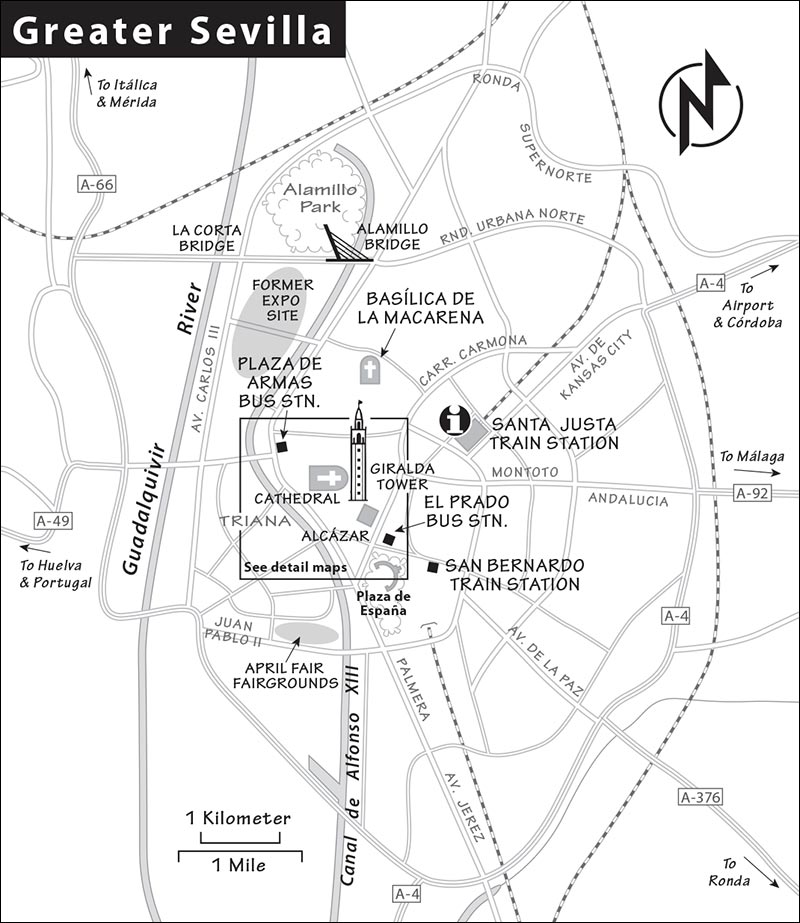
Today, Spains fourth-largest city (pop. 700,000) is Andalucas leading destination, buzzing with festivals, color, guitars, castanets, and street life, and enveloped in the fragrances of orange trees and jasmine. Sevilla also has its share of impressive sights. Its home to the worlds largest Gothic cathedral. The Alczar is a fantastic royal palace and garden ornamented with Islamic flair. But the real magic is the city itself, with its tangled former Jewish Quarter, riveting flamenco shows, thriving bars, and teeming evening paseo. As James Michener wrote, Sevilla doesnt have ambience, it is ambience.
PLANNING YOUR TIME
On a three-week trip, spend three nights and two days here. On even the shortest Spanish trip, Id zip here on the slick AVE train for a day trip from Madrid. With more time, if ever there was a Spanish city to linger in, its Sevilla.
The major sights are few and simple for a city of this size. The cathedral and the Alczar can be seen in about three hoursbut only if you buy tickets in advance. A wander through the Barrio Santa Cruz district takes about an hour.


